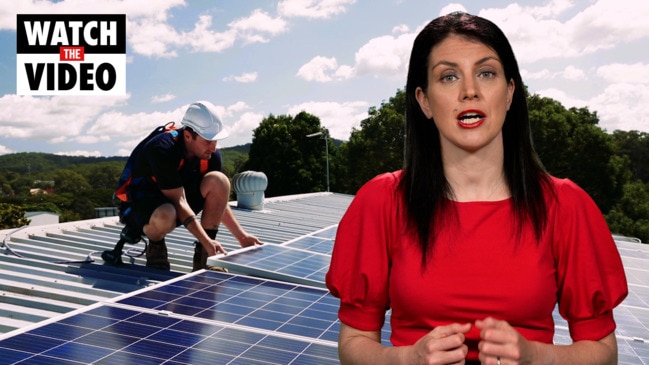Supply from solar generators exceeded that from all NSW, QLD and Victorian coal generation
Solar supplied more generation than coal into the national grid for the first time ever on Friday, underscoring the sweeping advance of renewables.

Solar supplied more generation than coal into the national electricity market for the first time ever at lunchtime on Friday, underscoring the sweeping advance of renewables in Australia’s electricity grid.
The renewable source beat the fossil fuel between 12.35pm and 1.10pm on Friday, with total supply by solar generators exceeded that from all black and brown coal generation in NSW, Victoria and Queensland.
“This appears to be the first time in national electricity market history that coal has been displaced as the number one fuel source of electricity,” said Josh Stabler, managing director at consultancy EnergyEdge.
Renewables provides a third of electricity supply in Australia’s grid with Labor targeting clean energy will hit 82 per cent by 2030 as part of broader efforts to find replacement capacity once a string of old coal plants shut down.
The return of negative wholesale prices in recent weeks as renewables carve out the position of coal during the day also continues to pile pressure on the fossil fuel.
The collapse of black coal-fired generation contributed to record prices in the June quarter with a string of plant breakdowns and supply shortages resulting in the fossil fuel recording its lowest second quarter output since the national electricity market began in 1998. Coal, which normally accounts for 60 per cent of supply, slumped to 43 per cent in the three months to June 30.
Over 3.1 million Australian households have added solar to their rooftops since the turn of the century, adding 15 gigawatts of capacity to the national electricity market.
A third of detached homes in the market have the technology installed but official forecasts show half of all homes will have the electricity source in place by 2032, rising to 65 per cent with 69GW of capacity by 2050 and accounting for one-fifth of total grid demand.
Some 150 gigawatts of energy supplies, nearly triple the current generation and storage capacity of the Australian market, has been proposed by companies and investors by 2032 with large-scale solar and wind backed up by battery storage accounting for 88 per cent of the project pipeline.







To join the conversation, please log in. Don't have an account? Register
Join the conversation, you are commenting as Logout